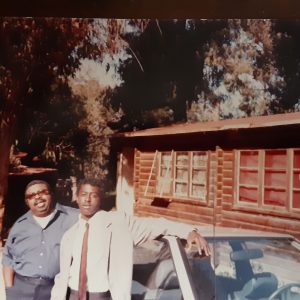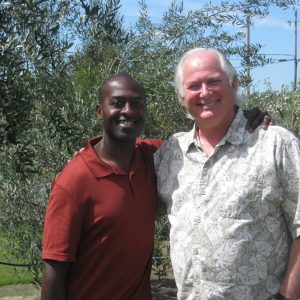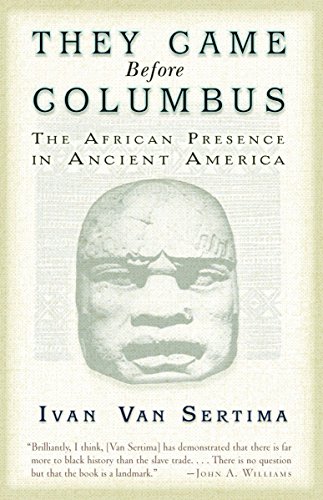Contact Information
-
MAILING : P.O. Box 8, Los Olivos, CA 93441
Interview with Howard McCoy '89
It’s a delight to speak with you this afternoon! First of all, give us a brief introduction. How did you end up at Midland School?
To make a long story short, a family friend knew someone who was going to Midland. This family was also from Compton, and he knew I needed a change of scenery. He had heard of Midland and knew another African American family that had a student there. I got in touch with them and then came up to the school for a visit over the summer.
The guy who showed me around, also from Compton, was a junior. I didn’t have a lot of information to go by other than someone from my hometown had gone there. I did the tour and decided to try the place out, although I had to repeat sophomore year, because I didn’t have the best grades when I started.
A lot was different for me when I arrived, from the physical landscape of the school to having a log cabin as a room. Everything was like a summer camp. I grew up in the inner city, and was now in rural California. It was definitely a culture shock. Once school started, interacting with the students was even more of a shock. I had never seen that many white people in one place at one time. In those days, we could leave campus and hitchhike into nearby towns, which were also predominantly white.

Howard at Midland for Thanksgiving, 1987
In your bio for Bishop O’Dowd high school, you mention “One of the people who most influenced me and mentored me was my high school history teacher.” Tell me about that experience and how your teacher had an impact on you.
That was Mr. Donohoe at Midland. When I introduce myself to my students, I share my experience about going to Midland and then I share a picture of me when I was there.
Going from Compton to Midland was a culture shock for me in a lot of ways so I started to act out. I didn’t know what else to do. I felt most of the teachers and students were not meeting me where I was, and I had to change a lot about myself, and who I was. This is my experience as being part of a historically marginalized group in a boarding school.
I was getting into trouble at Midland. They weren’t going to ask me back to be a junior due to my grades and my behavior. Mr. Donohoe who was an advocate for me. His question was, “How are you going to expect this kid to come here and just fit in?” There were no support systems in place, even though they were probably needed. I was slipping through the cracks and getting in a lot of trouble.
Mr. Donohoe said he would mentor me and be my advisor, and the school leadership agreed. Before the start of Junior year, I met with Mr. Donohoe and he made it very clear; the condition was that I had to check in with Mr. Donohoe regularly. I was still going to classes and being with my peers but I also had to do daily and weekly check-ins. Mr. Donohoe was willing to put in place whatever it took for me to stay on track and turn in my work. What I needed was a teacher to be more hands-on, and that’s what he gave me. Weekly, daily. I needed that. There were probably more students who needed that too; I’m sure I wasn’t the only one. I didn’t know how to study. I was never taught study skills. Without the support and advocacy of Mr. Donohoe, I wouldn’t have stayed at Midland or graduated. Who knows what I would have done. Because of him, I was able to graduate, and to go on to college and grad school. And from this experience, I knew early on what I wanted to do.
Wow, I can tell that Mr. Donohoe really made a difference for you as a student, and now you’ve become an educator yourself. You earned a B.A. in History/Black Studies from U.C. Santa Cruz; M.A. African Diaspora History from Texas Southern University. Tell me, what prompted you to choose these areas of study and how have they influenced your career as an educator?
Going into college, I was originally a literature major. Then I took my first History class that fall at UC Santa Cruz. It focused on race, and how race has affected U.S. History. That was something that I didn’t really consciously think about, that was not discussed a lot at Midland at that time. I realized that was something I was missing.
I had already been somewhat interested in History because of Mr. Donohoe, but after I took my first history class in college, that sparked me to think, “What can I do with this?” I think by my sophomore year in college, I said to myself I wanted to be a teacher. Looking back on it now, I definitely had that influence to go in that direction. I didn’t realize that at the moment. I thought, “Wow, maybe I can do this teaching thing!” I wanted to give my students some of the things that I didn’t get when I was learning history. Maybe I can do this the way I would have wanted to learn it and include things I would have appreciated learning about.
That’s how I got into teaching and how Midland helped to do that. Had I not had Mr. Donohoe as a history teacher, my path would have been different. Because of him and my time at Midland, it was about building relationships. That was the big piece. That’s something I definitely incorporate: building community. I feel like that helped me as a high school student. More so than teaching me history, Mr. Donohoe focused on building a relationship with me, and that’s how I do things now. That’s something I pride myself on in my teaching. Students enter my class, and my primary goal is to build a community that is a safe place but also a brave place. I definitely got that from him.

Howard chilling with Mr. Donohoe in 2009
Being a Social Studies teacher, how do you integrate problem solving and critical thinking/analysis in your own classroom? Do you have a lesson or project that you’re particularly proud of?
When I teach history, I’m always trying to make connections and make it relevant. I connect it with current events and things that are happening now. The last 10 years, a lot has been going on: Black Lives Matter, racial unrest, and mass shootings, in addition to the widespread voter suppression that is happening in our country right now.
Recently, In my U.S. History class, we looked at the U. S. Constitution, specifically focusing on the Bill of Rights. A hot topic is the 2nd amendment, so we spent a lot of time exploring this. I also had students think about if the Constitution were written today, what would they recommend? What would they take out? What would they add? We did a lot of four corners activities where students go to different corners of the room based on their beliefs or opinions. Whichever corner you choose to go to, you need to be able to explain why you are there. They had to think critically. In light of another’s person’s comment they might change their opinion and move to a different corner.
I always give kids space for critical thinking and being able to research things. Letting students do their thing. Students are tech savvy. We do a lot of things around tech. I like letting students choose the way they want to learn, so it’s about choice. This leads to a lot of experiential learning . Some kids build or create things. They might make a video, a t-shirt print, or an art performance. I make sure I’m giving students ways to show their learning through different modalities. That’s how I like to engage them with history.
You also mentioned that you use a lot of connection to place and environment in your own teaching. Tell me how you do that.
Something I pride myself on is making sure students see themselves in the curriculum. My classroom is really diverse. I use the personal funds of knowledge that they are bringing into the classroom. That could be their neighborhoods, their languages, their foods, different customs and traditions that are part of their lives. Even what their parents do for jobs can be relevant and add depth to the class discussion. Drawing on the collective funds of knowledge of the class, the students can see the relevance. I’ll also choose texts and examples that relate to their life experiences. When they see, my parents came from this place, or we speak this language, they have an instant connection.
Using mindfulness practices and bringing that to the classroom in something else I do so they can be one with themselves and the environment. Let’s take a moment to be here. Some of them are bringing trauma to class. Whether it happened at home or last period. We need to make sure everyone is ok and to bring ourselves here to the present. Acknowledging that everyone has their own experiences outside of the classroom.

An influential text in Howard’s academic journey
Can you tell us about any writers or philosophers who have inspired or influenced you?
One author that would have influenced me is Ivan Van Sertima’s with his book They Came Before Columbus. It was the first time I had heard that it was possible that Africans had done trans-Atlantic voyages before Columbus or other Europeans. I was in grad school in the early ‘90s when I first read it. The book had been out since the 80s, but I had never heard of that. You always learn about “The Age of Exploration” in school. Ivan Van Sertima wrote a book proving how it was possible for Africans from West Africa to get to Central America and actually trade with people there. It was influential and inspiring to me. It made me want to learn more about African history and that whole theory, which I now teach about and talk about in my own class. I have the ability to show students there are more possibilities than only one narrative. This takes some unteaching of ourselves as history teachers! I did primary school in the ‘70s, so I was only exposed to one story to begin with.
Do you have any words of wisdom for Midland students?
When I look at the website, it looks like Midland is more diverse than when I went there (I was the ONLY African American student in my class for my entire time at Midland). However it could probably still use some work in those areas. My words of wisdom would be for those kids who might feel like they are the only ones, or that they are different. Hang in there!
This experience you are going to have at Midland is worth so much. You are going to see that for the rest of your lives. Understanding needs vs. wants, for example. That’s something that I continue to remember, a philosophy that still drives my life. Do I need that? Do I want it? Midland prepared me for being able to be on my own and go to college. By the time I went to college, living on my own and knowing how to take care of myself and others was a piece of cake. Also, when looking back on my Midland experience, one of the most valuable skills I learned was how to “code switch”. I didn’t know it at the time, but now being able to reflect on my experience, I was living in “two worlds”; I had to be a certain way at Midland and a certain way back home.
You might feel like you’re the only one there. Just know that we who have gone before are there with you. This is an experience you are going to look back on. You might not come back after you graduate. But you will definitely remember your time. Hang in there. In my case, I felt like, “This is it, I gotta make this work.”
Things weren’t smooth. My senior year, I slipped back into my old ways and I barely made it out of there. I had to work three times as hard just to keep up, taking summer school and repeating classes. But I made it, and you can too.
Continue exploring the Midland experience